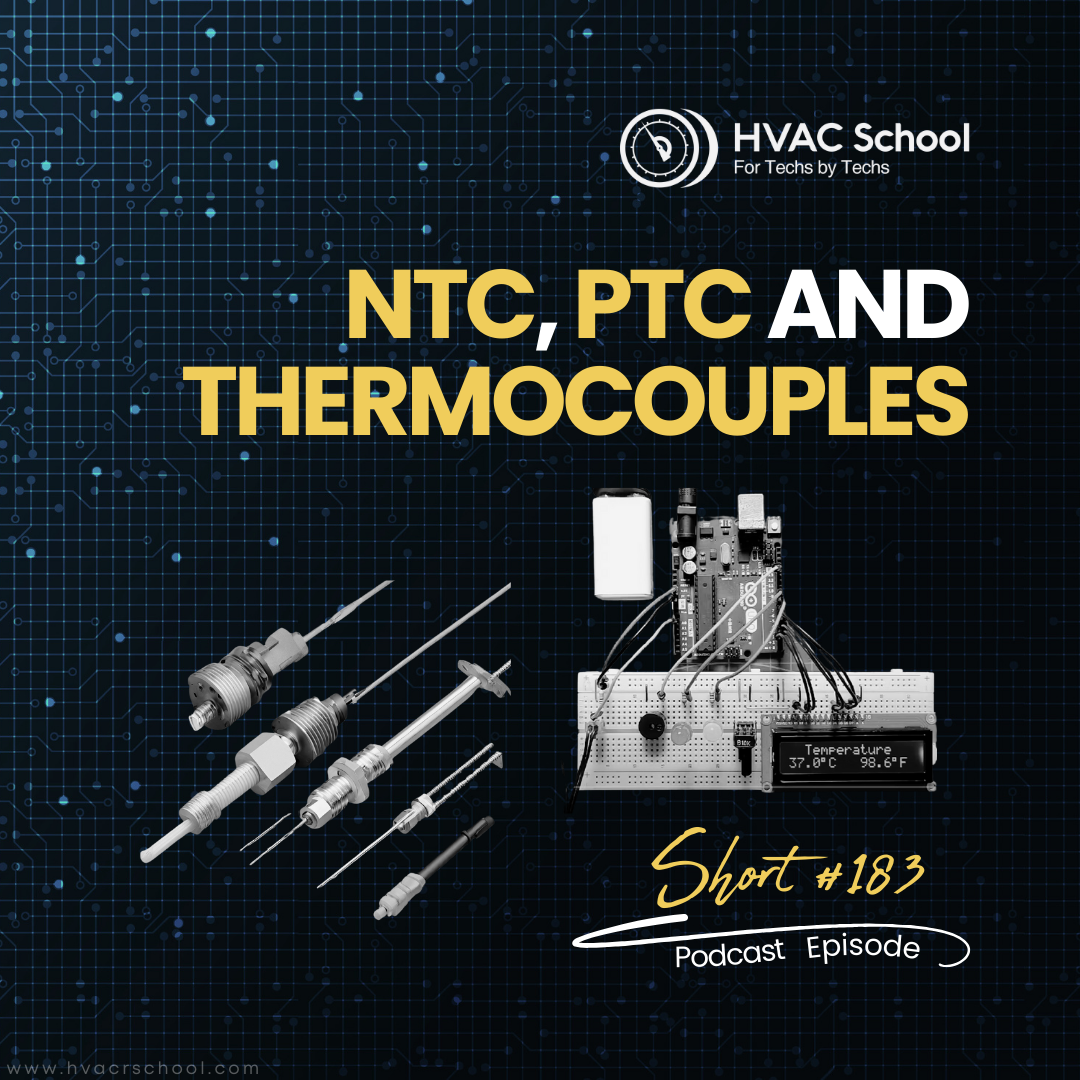NTC, PTC and Thermocouples – Short #183

In this short podcast episode, Bryan dives into NTC, PTC, and thermocouples. NTC and PTC are two types of thermistors, and all three tools are used to sense temperature.
Thermistors are resistors that change their resistance based on a change in temperature. They must be powered, and the resistance changes the amperage. You can test a thermistor with an ohmmeter at a fixed temperature. The best temperature for testing is the thermistor's rated temperature, typically 77 degrees Fahrenheit.
NTC thermistors are negative temperature coefficient thermistors; as the temperature decreases, the resistance increases, and vice versa. Temperature and resistance are inversely proportional. PTC thermistors are positive temperature coefficient thermistors, and the temperature and resistance are directly proportional. These types of thermistors are usually quite accurate, and they are common in thermostats.
PTCs are common in certain types of hard start kits, in which they help take the start capacitor or start winding out of the circuit. They have the same function as a potential relay. The resistance increases with temperature, meaning the PTC gets hotter and raises its resistance until the circuit opens, but it takes a while to reset because it needs to cool down.
Thermocouples work because they generate a voltage in response to a temperature difference between two dissimilar metals. This phenomenon is called the Seebeck effect. Thermocouples are hardy devices used in temperature-sensing equipment, and they measure over a wider range than thermistors. However, thermocouples tend to be less accurate than thermistors.
Learn more about the 5th Annual HVACR Training Symposium at https://hvacrschool.com/Symposium24.
If you have an iPhone, subscribe to the podcast HERE, and if you have an Android phone, subscribe HERE.”
Subscribe to our YouTube channel at https://www.youtube.com/@HVACS.
Check out our handy calculators HERE or on the HVAC School Mobile App (Google Play Store or App Store).
Author:









Comments
To leave a comment, you need to log in.
Log In